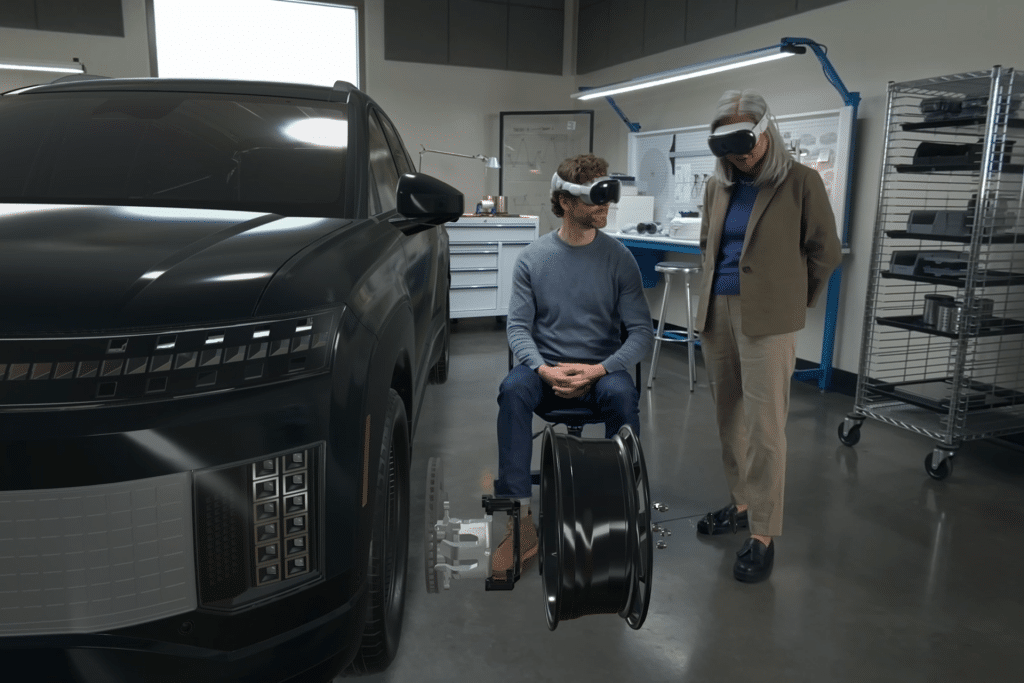Reality Composer Pro, bundled with Xcode, is a cornerstone of visionOS’s 3D modeling capabilities. This visual editor simplifies the import, organization, and optimization of 3D assets, including models, textures, materials, and spatial audio. Designers can import USDZ files—a format developed by Pixar and Apple for high-quality 3D graphics—or create scenes directly within the tool. Reality Composer Pro’s integration with RealityKit, Apple’s 3D rendering engine, ensures that models adapt to real-world lighting and cast realistic shadows, enhancing their visual fidelity. For instance, architects can preview building models in situ, adjusting elements like window placements or materials to match environmental conditions, all without leaving the visionOS Shared Space.
Interactive Modeling with SwiftUI and RealityKit
SwiftUI, Apple’s declarative framework, is central to building visionOS apps that incorporate 3D content. Designers can use the Model3D view to embed USDZ models into windows or create volumetric scenes that users can explore from any angle. For example, a product designer might display a prototype in a window, allowing stakeholders to rotate it using pinch-and-drag gestures. RealityKit enhances these interactions by supporting dynamic scene building, where models can be modified at runtime with animations, physics, or custom shaders based on MaterialX standards. A practical workflow might involve importing a car model from Sketchfab, applying textures in Reality Composer Pro, and then using SwiftUI to create an app that lets users customize its color or components in a Full Space immersive environment.
Enhancing Collaboration with Shapr3D on Vision Pro
Shapr3D, a CAD tool powered by Siemens Parasolid, exemplifies how visionOS elevates professional design workflows. Available natively on visionOS, Shapr3D allows designers to create and edit manufacturing-ready 3D models in AR, with life-sized visualizations that provide context for real-world applications. During design reviews, teams can view models in intricate detail, annotate changes, and make real-time edits in a shared immersive space. This eliminates the delays of traditional VR setups, where complex hardware or software configurations often slow collaboration. Shapr3D’s seamless integration across macOS, iPadOS, and visionOS ensures that designers can switch devices without disrupting their workflow, maintaining precision and accessibility whether working solo or with a team.
Overcoming Workflow Challenges
While visionOS offers powerful tools, it’s not without challenges. The platform’s reliance on ARKit for scene understanding—such as plane estimation or skeletal hand tracking—requires apps to request permissions for Full Space experiences, which can raise privacy concerns. Additionally, visionOS’s sandboxed ARKit sessions limit data sharing between apps, potentially complicating collaborative workflows where multiple tools need access to the same 3D environment. Designers must also optimize models for performance, as Vision Pro’s high-resolution 4K micro-OLED displays demand efficient rendering to avoid lag. Tools like Reality Composer Pro help by automatically optimizing assets, but complex models may still require manual adjustments to balance detail and performance.
The Future of 3D Design on visionOS
As visionOS evolves, its potential for 3D modeling continues to grow. Future updates, such as visionOS 3, are expected to enhance tools like RoomPlan for better spatial mapping, enabling more accurate integration of models into real-world spaces. Designers can anticipate broader support for third-party frameworks and improved ARKit APIs, which could streamline workflows for scanning and converting real-world objects into digital models using LiDAR-equipped iPhones or iPads. Apple’s focus on accessibility, with features like voice control and ergonomic content placement, ensures that visionOS remains inclusive for diverse users. By combining these advancements with its infinite spatial canvas, visionOS is poised to redefine 3D modeling, making it more intuitive, collaborative, and impactful for creators worldwide.
